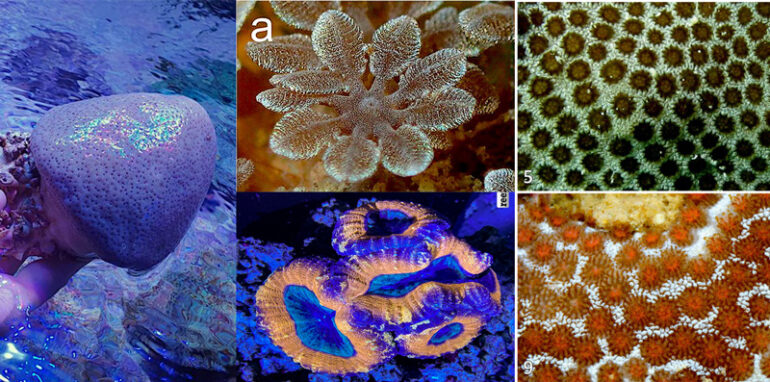It’s no secret that corals are hard to identify, and that fish are much more appealing when it comes to new species description. New discoveries like the Corazon Damselfish and the Vibranium Fairy Wrasse grab headlines in popular culture in a way that corals never could, and truth be told 2019 was a very modest year for new species of our beloved corals.
Nevertheless, although there were only around six new species of corals that pertain to aquarium suitable groups, two of these are actually relevant to everyday reef aquariums. What we lacked in abundance and variety was more than made up by the relevance of some of the species that got officially described.
Porites farasani & P. hadramauti, Two New Stony Coral Species
As certain factions of the reef world have become specifically interested in fast-growing, encrusting corals, some of the more attractive species of Porites have become more popular; the two new species of Porites described from the Red Sea have a ton of potential in the pursuit of fun, encrusting corals. The teeny tiny Hanabira micro-Octocoral is part of a group of mostly nondescript polyps so small that they can proliferate in a reef tank almost unnoticed, but Hanabira is certainly one of the prettiest.
As an ardent fan of various soft and leather corals, we were keenly interested in the description of two new species from a new genus of toadstool corals from Western Australia. The Anastromvos quickly developed a following and the common name of Astro leather, fueled by their availability from Ocean Reefs Marine Aquariums.
As soon as this coral was described the coral connoisseurs at ORMA shared details since they are intimately familiar with this rare and truly distinct coral group from their neighboring reefs. Not only did we get a few colonies ourselves but ORMA even showed us some irresistible green varieties of the Astro Leather coral.
Anastromvos, a New Genus of Leather Coral from Northwest Australia
The last coral on this list is not exactly a new species, but the reclassification of the orange ‘Lobophyllia’ pachysepta as an Acanthastrea has answered some long standing questions and confusion about this particular coral. Coral collectors and wholesalers have long known not to place the ‘Orange Lobos’ next to any other colors of Lobophyllia as the orange colonies would quickly and aggressively sting and digest them.
We’ve chronicled our own experiences with a colony of orange A. pachysetpa that has a long rap sheet of harming and killing neighboring corals. The renaming of Orange ‘Lobos’ adds some much needed clarity to our understanding of the LPS Tree of Life and we look forward to seeing more sensible coral names and reassignments in the coming years and decade.
Acanthastrea pachysepta: Your Orange Lobo is most Likely an Acan!



